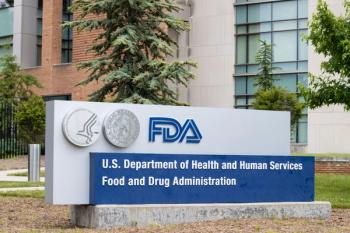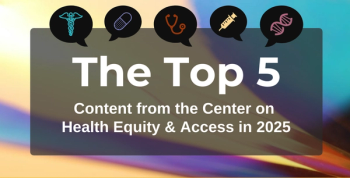
5 Things to Know About Low-Grade Serous Ovarian Cancer
The first-ever Low-Grade Serous Ovarian Cancer (LGSOC) Awareness Day is dedicated to raising awareness, providing resources, and advocating for more research into this rare and recurrent form of ovarian cancer.
Verastem Oncology and the STAAR Ovarian Cancer Foundation recognized the first Low-Grade Serous Ovarian Cancer (LGSOC) Awareness Day on September 9, 2024, during
LGSOC is a rare and chemotherapy-resistant form of ovarian cancer with limited treatment options and little awareness among patients and health care providers. This new annual awareness day aims to educate the public, provide resources for patients, and advocate for increased research. Here are 5 key things to know about LGSOC.
Symptoms and Prevalence
The symptoms of LGSOC include stomach bloating, eating less because of feeling full, repeated changes to bowel movements, intense back and pelvic pain, urgent need to urinate, and stomach pain.2 Some of the symptoms of LGSOC are the same as other ovarian cancers and other diseases, such as irritable bowel syndrome (IBS), which makes it more difficult to diagnose. Additionally, only about 5% of all serous ovarian cancers are LGSOC, with nearly 2000 new cases diagnosed in the United States each year, and 80% of individuals with treated LGSOC will have their cancer come back.
Demographics
In a first-of-its-kind multi-national survey on the attitudes and behaviors of 186 women with LGSOC, it was found that LGSOC is known to affect younger people, with the median age at diagnosis of 43 to 47 years following a bimodal distribution (20 to 30 years and 50 to 60 years). Many individuals are diagnosed in their 40s but some have been diagnosed as young as 14 years. Approximately 6000 to 8000 women in the United States and 80,000 worldwide are living with this disease.3
Knowledge and Resources
In the survey, nearly all women (99%) had never heard of the condition before they were diagnosed and 65% agree that if they had known more about LGSOC, they probably would have been diagnosed sooner.2 Alarmingly, 40% of patients mistakenly believe that LGSOC is less serious than high-grade serous ovarian cancer (HGSOC), and 27% are unaware that LGSOC tends to affect younger women more frequently. While 88% of patients strongly agree that LGSOC deserves more attention as a distinct disease, there is a noticeable disparity in the knowledge levels of health care providers (HCPs). Only 40% of patients feel their diagnosing HCP was "very knowledgeable" about LGSOC, with oncologists more likely to be seen as knowledgeable compared with generalists like OB/GYNs or primary care physicians. Patients diagnosed by oncologists also reported clearer communication, faster diagnoses, and easier access to treatment.
Delayed Diagnoses and Low Awareness
For many women with LGSOC, the path to diagnosis is long and frustrating, with an average of nearly 3 years passing from the onset of symptoms to a confirmed diagnosis. Most patients (72%) wish they had sought medical attention sooner, and only 41% are satisfied with the time it took to receive their diagnosis. Nearly three-quarters (73%) of patients describe the diagnostic journey as difficult, with many reporting that health care providers misdiagnosed or dismissed their symptoms.
Challenges With Disease Management
A significant 68% of women felt their symptoms were wrongly attributed to other conditions, and 66% felt dismissed by their health care providers before finally receiving an LGSOC diagnosis. The biggest concerns voiced by patients include living with uncertainty (68%), a lack of treatment options (60%), and the difficulty of managing treatment side effects (52%), which has led 25% to pause or stop treatment. Many feel like their lives revolve around their cancer, and 90% believe that LGSOC patients are left with "treatment leftovers," signaling the need for better options and more focused care for this unique and challenging disease.
“This survey is an important collective effort to gather valuable insights and opinions to help better serve those living with LGSOC,” said David Gershenson, MD, expert researcher in rare ovarian cancers and LGSOC Patient Impact Advisory Committee member, in a statement.3 “As a physician dedicated to finding better ways to manage LGSOC, I witness how the long journey to diagnosis and the uncertainty of this disease takes a toll on my patients and their loved ones. These survey results underscore the urgency of educating on this unique form of ovarian cancer and provide important information to guide that effort.”
References
1. Low-grade serous ovarian cancer (LGSOC) and its symptoms. Verastem. August 27, 2024. Accessed September 27, 2024.
2. Low-grade serous ovarian cancer (LGSOC) patient impact survey research findings. Verastem. March 18, 2024. Accessed September 27, 2024.
3. Global patient survey results reveal significant negative impact on social, emotional and mental well-being for people living with low-grade serous ovarian cancer. News release. Verastem. March 18, 2024. Accessed September 27, 2024.
Newsletter
Stay ahead of policy, cost, and value—subscribe to AJMC for expert insights at the intersection of clinical care and health economics.








































